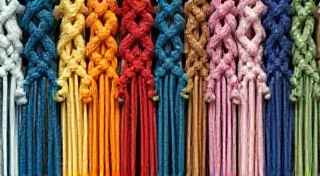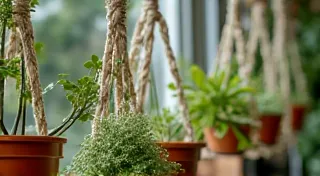The Geometry of Absence: Macrame Patterns as Blank Canvas for Narrative
There’s a particular smell associated with history, isn’t there? Not the dusty, academic scent of a library, but something deeper, richer. It's the aroma of oiled wood, worn leather, and the ghosts of melodies, clinging to an antique accordion. My grandfather, a taciturn man of few words, possessed one. Its bellows, once vibrant with life, were now stiff and cracked, but the intricate carvings on its body whispered stories he never shared. He's gone now, but the accordion remains, a silent testament to a life lived, a life imbued with artistry and a quiet yearning I couldn’t quite grasp as a child. It’s this same sense of hidden narratives, of stories woven into the very fabric of things, that I find so compelling in macrame.
We often approach macrame as a craft, a series of instructions to be followed to create a tangible object – a plant hanger, a wall tapestry, a keychain. But I want to propose a different perspective: seeing macrame patterns not as blueprints for creation, but as visual prompts, as abstract landscapes ripe for narrative interpretation. The deliberate absence of knots, the subtle shifts in density, the way the cord hangs and sways – these aren't just aesthetic choices; they are visual cues, capable of inspiring plot, character development, and thematic exploration. It's about recognizing that within the apparent order of a macrame pattern lies a hidden geometry of absence, and learning to listen to what that absence communicates.
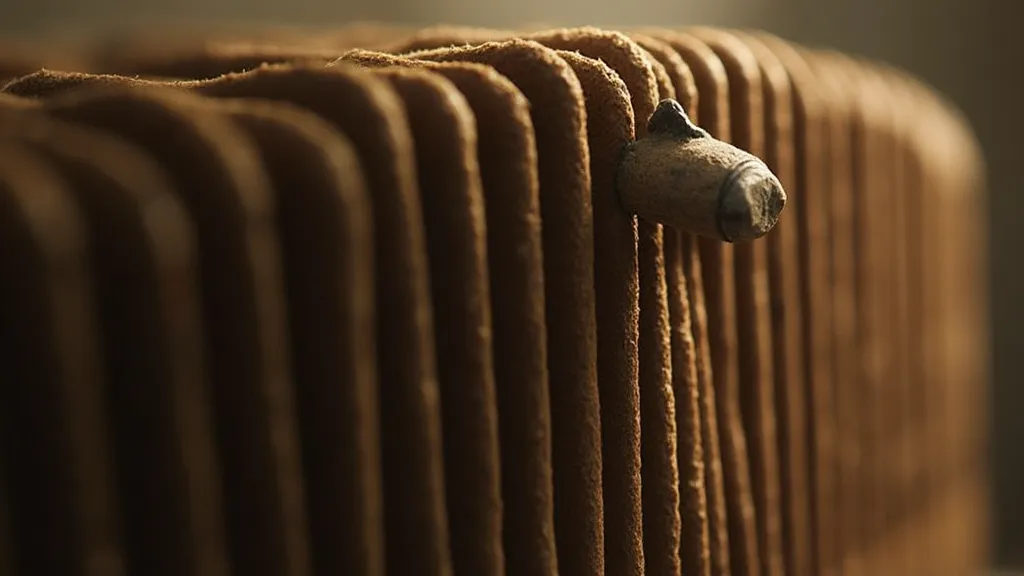
The Language of Knots: Presence and Absence
Think about a simple square macrame knot pattern. The four knots themselves represent points of action, moments of decision. But what's equally important is the negative space around those knots. That emptiness suggests pauses, reflections, the quiet moments between events. A densely knotted area might symbolize a period of conflict or intense emotion, while a sparsely knotted area could represent peace, resolution, or a period of introspection. The relationship between these dense and sparse regions is critical; it establishes rhythm, pacing, and ultimately, the emotional arc of the implied story.
Consider the journey of a single cord within a complex pattern. It might be tight and constricted in one area, then loose and flowing in another. This isn't just about visual appeal; it mirrors the ebb and flow of a character's life – periods of struggle followed by moments of freedom. Even the texture of the cord itself – whether it’s a rough, natural jute or a smooth, polished cotton – can influence the narrative. A rough cord might suggest a character’s inner turmoil, while a smooth cord could symbolize a journey towards clarity and understanding. Learning to manage these variations in tension is key to a successful project. If you are new to the craft, you might find our tutorial on Troubleshooting Common Macrame Tension Issues incredibly helpful as you begin to explore these nuances.
Historical Echoes: Macrame and the Art of Storytelling
Macrame, in its essence, is an ancient art form. Its roots extend far back into history, with evidence of knotted textiles found in ancient Peru and Egypt. In those early iterations, these weren’t just decorative objects; they were often imbued with symbolic meaning, used in religious ceremonies and as markers of status. Imagine the skill, the patience, required to create such intricate works by hand, relying solely on memory and intuition. These early artisans weren’t just creating patterns; they were encoding stories, weaving narratives into the very fabric of their creations.
During the Victorian era, macrame experienced a resurgence in popularity. It became a popular pastime for women, a form of creative expression often restricted by societal norms. These women, many of whom were literate and keenly observant, likely understood the power of pattern and symbolism intuitively. They may have used macrame as a subconscious means of exploring complex emotions and narratives, imbuing their creations with personal meaning. The geometric precision of Victorian macrame, often found in elaborate edgings and lace-like designs, almost feels like a visual representation of the era’s intricate social codes and unspoken rules. Some of those early projects involved creating functional items, such as beautifully adorned a simple macrame plant hanger, adding a touch of handcrafted elegance to the home.
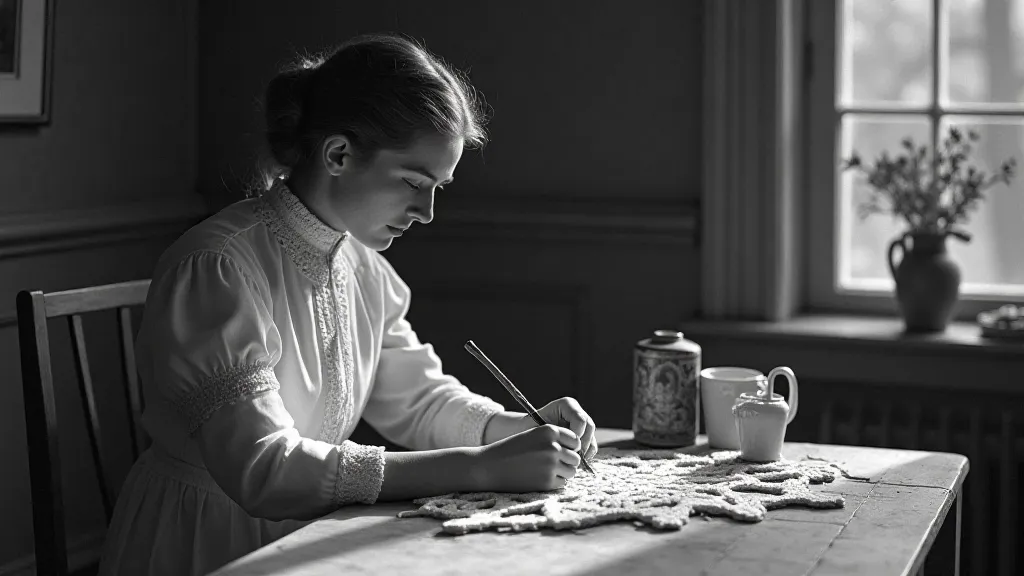
Translating Patterns: From Visual Blueprint to Narrative Seed
So, how do we begin to translate a macrame pattern into a narrative? Start by simply observing. Don’t think about knots or cords initially; just see the overall shape, the flow, the balance. Ask yourself: What feeling does this pattern evoke? Is it chaotic or ordered? Restricting or expansive? Does it feel like a journey, a spiral, a fragmented memory?
Then, begin to assign meaning to the individual elements. A cluster of tightly knotted cords could represent a family secret, a challenging relationship, or a moment of intense pressure. A long, flowing strand could represent a character’s longing for something beyond their grasp, or a quest for self-discovery. Consider the directionality of the cords – are they ascending, descending, looping? This can suggest the overall trajectory of the story.
Don't be afraid to experiment. There's no right or wrong interpretation. The beauty of this approach lies in its subjectivity. What one person sees as a representation of loss, another might interpret as a symbol of renewal. Embrace the ambiguity, the open-endedness. Let the pattern guide you, surprise you, challenge your assumptions. It’s a conversation, a dance between the visual form and your imagination.
The Silent Conversation: Deeper Meanings and Considerations
This interpretation of macrame isn’t just about aesthetics; it’s a doorway to understanding how humans use symbolic representation across cultures and throughout history. Consider the purposeful use of a The Silent Conversation: Macrame as a Dialogue with the Material - the way textures and knot formations can subtly communicate ideas, emotions, and narratives that words sometimes fail to capture. Just as a composer might layer musical motifs to build tension and reveal a complex story, a macrame artist can use the interplay of knots, cords, and negative space to create a tapestry of meaning.
Restoration and Appreciation: Beyond the Practical
My grandfather’s accordion is far from perfect. Years of neglect have taken their toll. The bellows are cracked and stiff, the keys are sticking, and the wood is faded. But I’ve begun the slow, painstaking process of restoration. It's not about making it new; it’s about preserving its history, revealing the beauty that lies beneath the wear and tear. The same principle applies to antique macrame pieces. A slightly frayed edge, a faded color – these aren't flaws; they are marks of time, evidence of a life lived, a story waiting to be rediscovered.
Collecting antique macrame isn’t just about acquiring a decorative object; it’s about connecting with a tradition, appreciating the skill and artistry of the creators, and preserving a tangible link to the past. It’s about recognizing that within these seemingly simple patterns lies a wealth of stories, waiting to be unlocked. And just as a skilled restorer carefully preserves the integrity of an antique instrument, we can, with a little observation and imagination, breathe new life into these forgotten narratives.
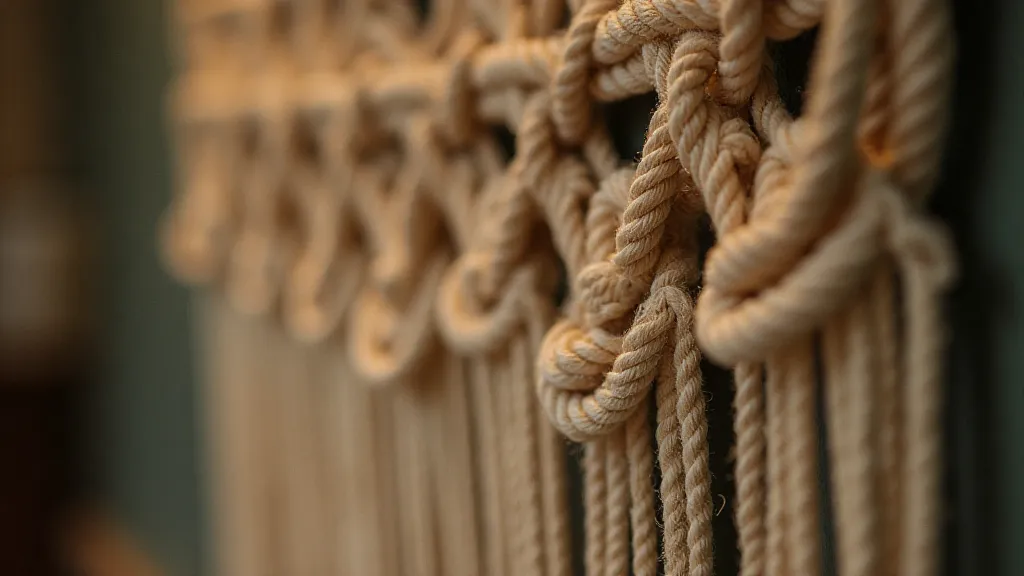
The geometry of absence in macrame isn't just about knots and cords; it's about the power of observation, the beauty of imperfection, and the enduring human need to create, to tell stories, and to connect with something larger than ourselves. It’s a quiet, profound lesson, whispered from the shadows of the past, waiting to be heard. Beyond the simple techniques, lies the understanding of form and feeling, a language communicated through texture and design. Even something as simple as incorporating a clever The Gathering Knot: A Stylish Finishing Touch can elevate a piece from functional to truly artistic.
Consider the broader context of textile arts – weaving, embroidery, and other forms of fiber manipulation – and the profound way these traditions have shaped human culture. Macrame, in its own quiet way, represents a continuation of this rich and vital heritage, a testament to the enduring power of human creativity.

